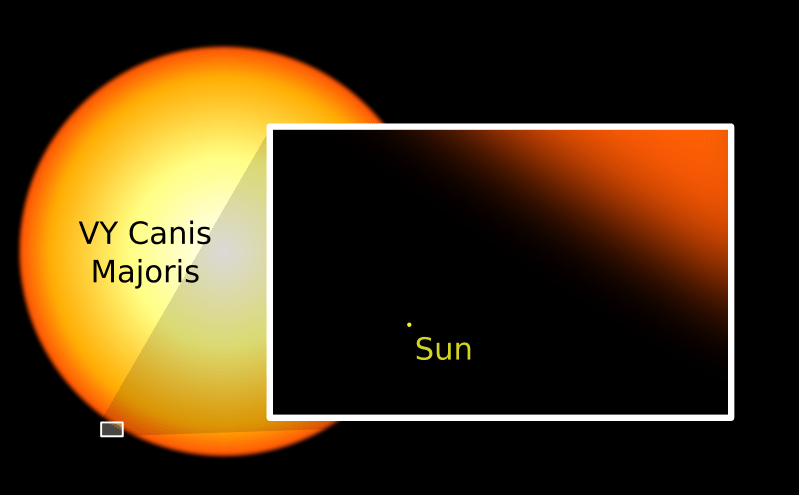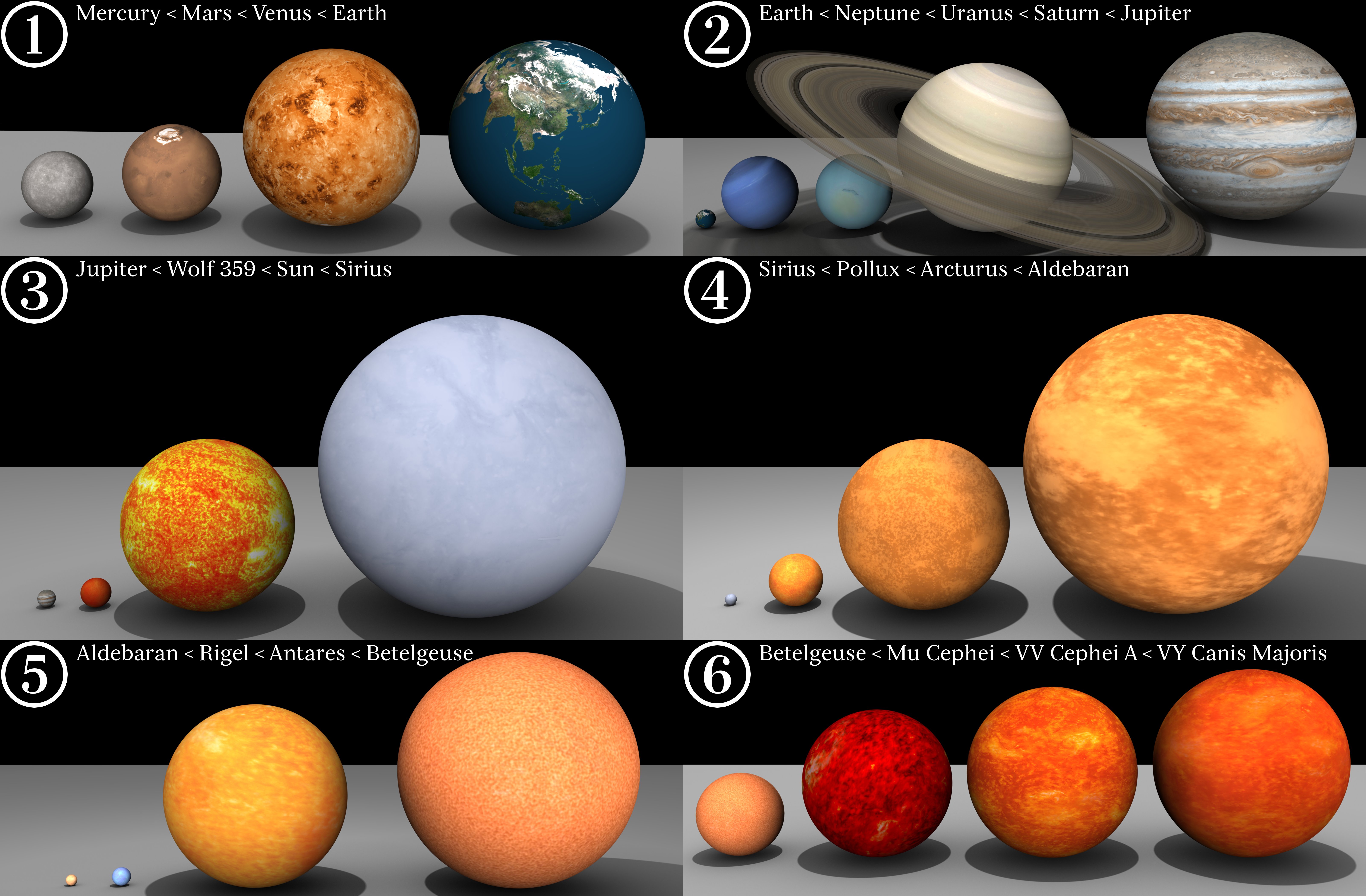What is the name of the largest star?
Well, for the moment, let us assume that we can only discuss stars that were named by humans. That is, there may be many stars larger than the one I am going to discuss, but we have not discovered them yet. If some other intelligent life form out in the universe has, we do not know about it...
The largest known star in terms of size, radius, diameter, whatever, is named VY Canis Majoris. VY Canis Majoris is between about 1800 and 2100 times larger than our sun.
DS wants to know why VY Canis Majoris is named as it is. The star is in the constellation Canis Major, thus its surname. From what I can tell, VY comes from the person who first cataloged the star, A.N. Vyssotsky. Yeah, that's helpful.
Vy Canis Majoris is a relatively cold star with a photosphere temperature of only about 3500 Kelvins (5840 degrees Fahrenheit). Our sun has a photosphere temperature of about 6000 kelvins, or about 11,000 degrees Fahrenheit. In general, the larger the star, the cooler its surface.
Someone with a six-year-old has already answered this question, and I'm going to steal one of their graphics. Go back to my post about Pluto and the graphic of the solar system. It's approximately to scale, with the sun off the screen. Here's our sun compared with Vy Canis Majoris. Vy CMa would reach past the orbit of Saturn.
 Here's another graphic that shows relative sizes of celestial bodies. As you go from one frame to the next (say, 2 to 3), the last object in the first frame is the first object in the next frame. Going from 2 to 3, you see the size differences between Jupiter and the other planets and Jupiter and the sun and Sirius. This does not have VY Canis Majoris on it, but it'll be in the last frame, just a bit bigger than VV Cephei A.
Here's another graphic that shows relative sizes of celestial bodies. As you go from one frame to the next (say, 2 to 3), the last object in the first frame is the first object in the next frame. Going from 2 to 3, you see the size differences between Jupiter and the other planets and Jupiter and the sun and Sirius. This does not have VY Canis Majoris on it, but it'll be in the last frame, just a bit bigger than VV Cephei A.
Everything I've talked about so far has been in terms of radius, volume, whatever. Another measure of "size" is mass. VY Canis Majoris is only about 30 to 40 times as massive as our sun. The most massive stars that we know about include HD_269810, Eta Carinae, the Pistol Star, and WR102ka, each of which is about 150 times as massive as our sun. These massive, luminuous stars are expected to end in super novae in the next million years or so. Depending on the details of the super nova, these stars will either end as neutron stars or possibly black holes. A neutron star will form if what's left after the super nova is less than about three times the mass of the sun. Otherwise, a black hole will form.
Will our sun become a black hole?
No.
Our sun's evolution from now until about six billion years from now will be as follows:
In about four billion years, the hydrogen at the sun's core will be used up and it'll start fusing helium into carbon and oxygen. As this happens, it'll expand a great deal and become a red dwarf. Its surface will reach the orbit of Mercury. The sun will expand and contract several times during its red dwarf phase. At some point, about 30 million years after it becomes a red dwarf, the sun will expand out to Earth's orbit. When this happens, a large amount of material (up to about 50% of the sun's mass) will continue moving outward and will be lost to space.
After that happens, the core of the sun will collapse to about the size of the Earth. Because of its mass, it cannot collapse any further and it'll become a white dwarf, with a core temperature of more than 100,000 kelvins. Its density will be about a million times larger than the density of the earth, and its core will be carbon and oxygen. The white dwarf will cool, and after a very long time (hundreds to thousands of billions of years), it should become a cold lump of degenerate matter, called a black dwarf. None of these black dwarves should exist right now because the universe is only about 15 billion years old.




No comments:
Post a Comment